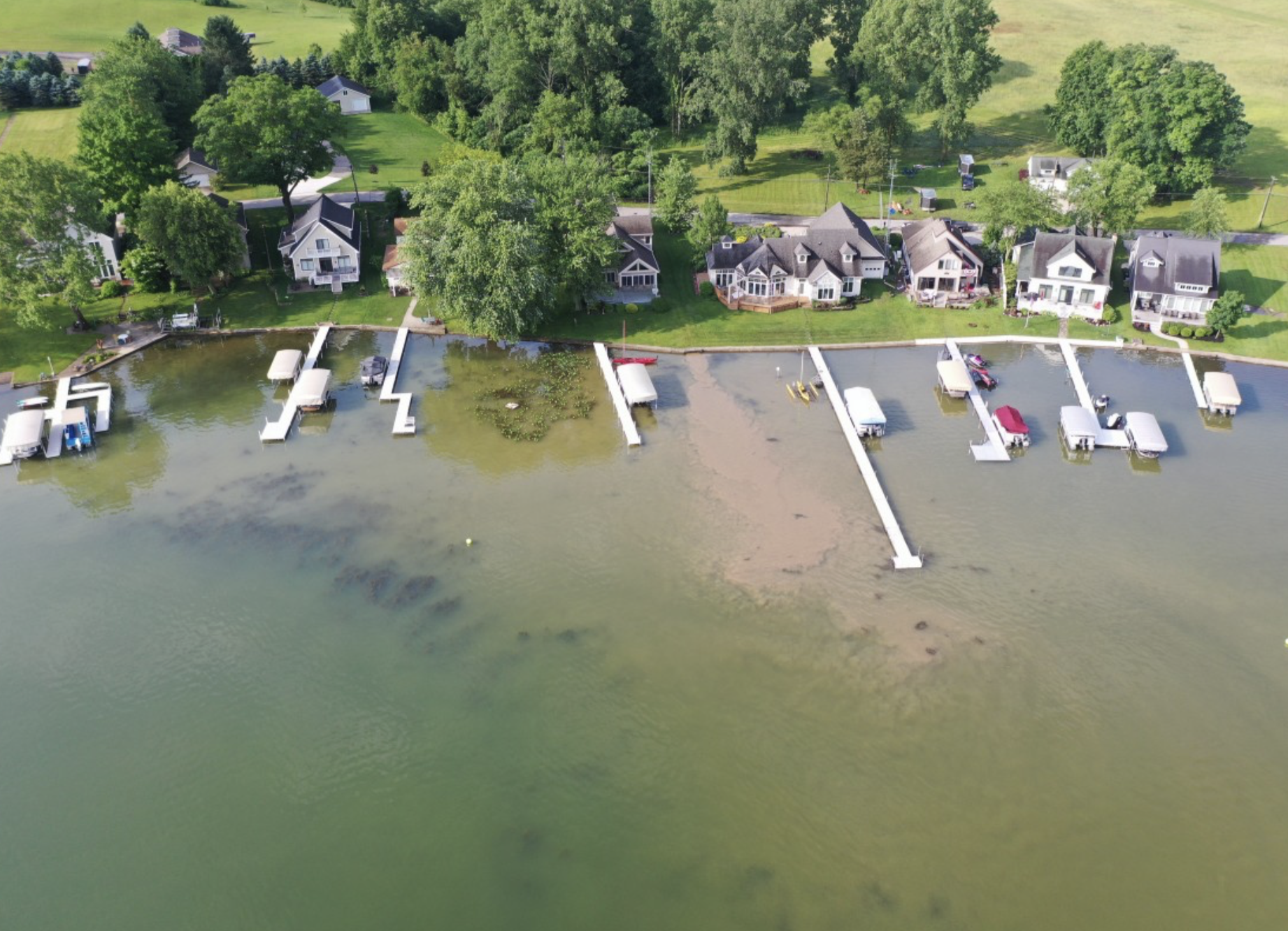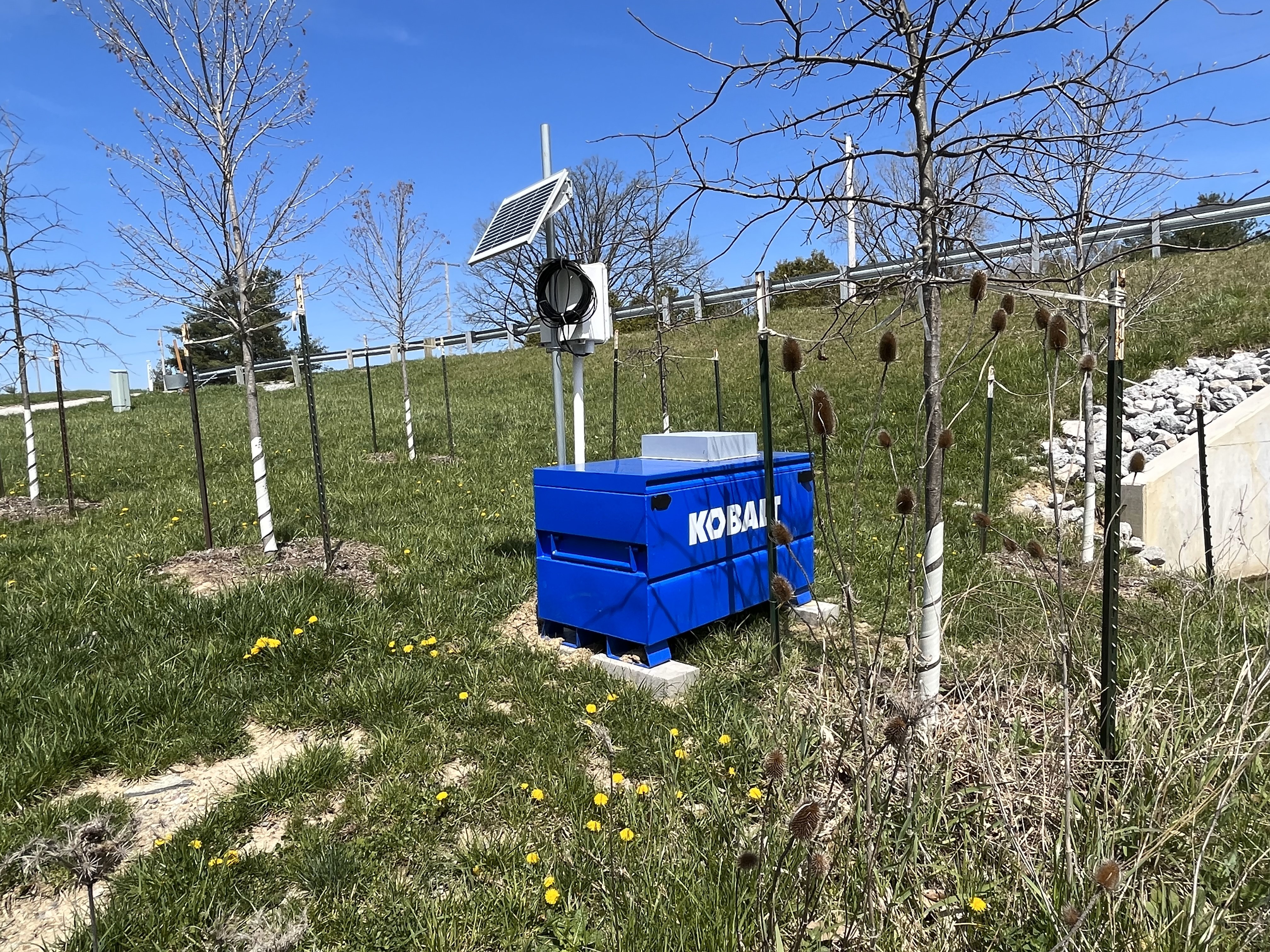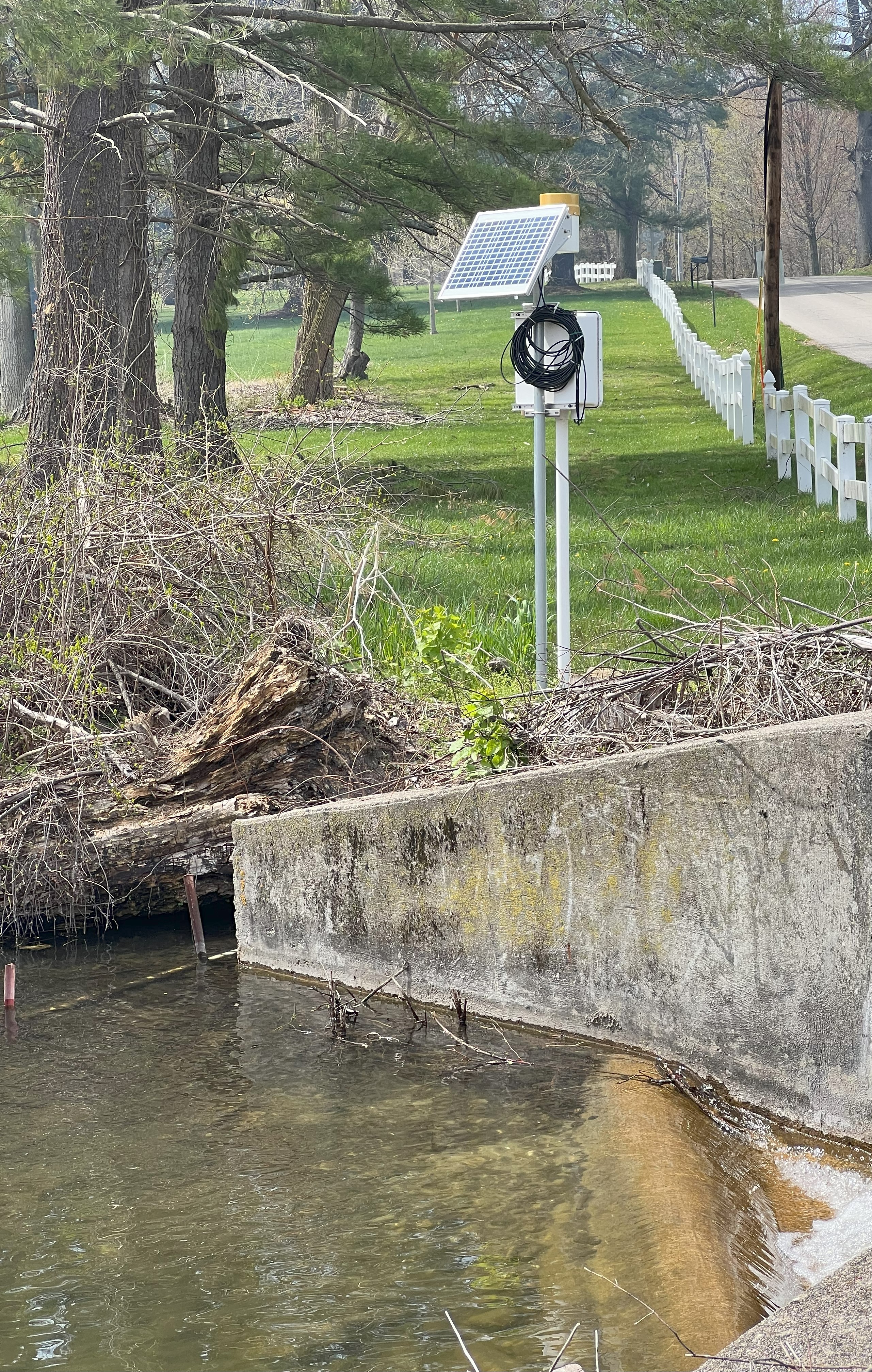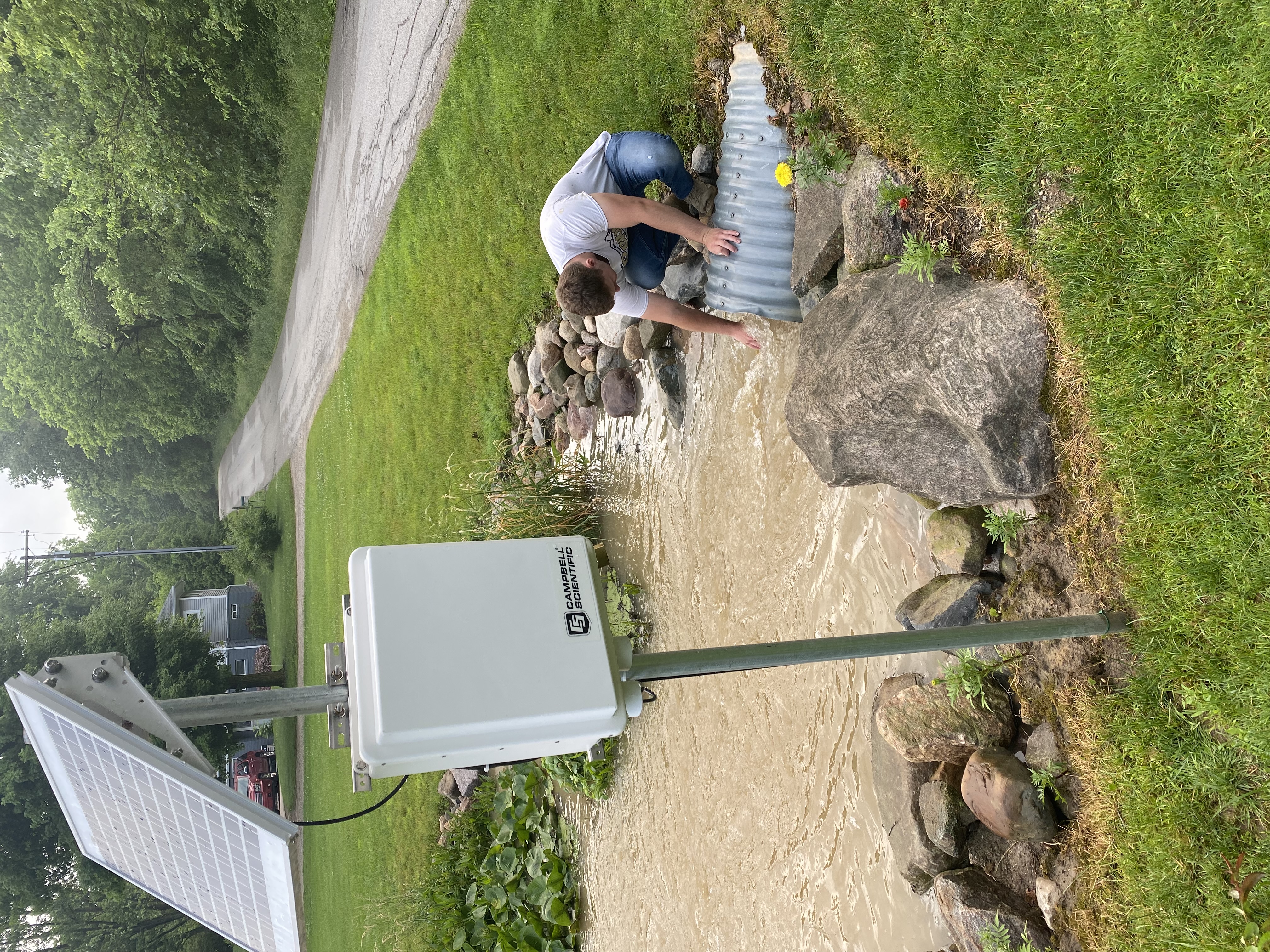Watershed Diagnostic Study Project Updates
November 10, 2024
The perpetual challenge for Clear Lake and most, if not all, glacial lakes in Indiana is to have an accurate understanding of nutrient and sediment loads entering and leaving the lake. This understanding is essential to improve or maintain the water quality.
Working with the team from our consultants Ecosystems Connections Institute, a robust experimental design has been created to establish sound ecological benchmarks that will be useful for understanding the nutrient and sediment loads entering and leaving the Clear Lake watershed.
By using an approach rooted in science, we can better identify projects that can improve our water quality and create productive partnerships to help us do that.

Pictured to the right is muddy water entering Clear Lake from the Cyrus Brouse Ditch following a recent storm event. A key goal of the Watershed Diagnostic Study is to identify and prioritize watershed improvement
projects that will improve the water flowing over, under and through the landscape into our lakes.
But first, we need the data. This is a long term project. Our plan to get reliable data is outlined below for the the next few years.

WHAT'S NEW
2024 - Gaining Knowledge
The full Water Quality Gage Stations at Harry Teeters Ditch and Cyrus Brouse Ditch inflow locations as well as the partial Gage Station at Round Lake outflow have been continuously pulling samples for water quality analysis throughout the year. Additionally, grab samples were frequently taken at the deepest portions of Clear Lake along with vertical profiles measuring temperature and dissolved oxygen at various depths.
Data analysis so far shows that the Cyrus Brouse and Harry Teeters subwatersheds contribute the largest amounts of sediment and phosphorus, especially during the spring and early summer months. Within the lake, seasonal changes in dissolved oxygen levels and water clarity are evident. These factors—excess sediment and phosphorus, dissolved oxygen levels, and water clarity—are crucial to the health of the ecosystem and our enjoyment of the lake.
The Watershed Diagnostic Study will continue through 2025, building on current data. As our environment responds to shifting weather patterns and seasonal changes, this study will help us make informed decisions about water quality improvement and watershed protection.
2023 - Installing Full Water Quality Stations
Some good news on the water quality front: The Clear Lake Township Land Conservancy received a grant to help us work toward one of our key priorities: keeping our water quality pristine. The Midwest Glacial Lakes Partnership (MGLP) has awarded nearly $60,000 in funds to support the installation of full water quality gage stations at two major inflow sites. The funds are to be used in 2024 and 2025.
Full Water Quality Gage Stations have been installed at the Harry Teeters Ditch inflow and at the Cyrus Brouse Ditch inflow. Water samples are now automatically being collected for analysis. A partial gage station continues to be maintained at the Round Lake exit.
The full gage stations measure key parameters including: Phosphorus, Nitrogen, and sediment loads for the water samples, and rainfall, water temperature, air temperature, and volume of water flow on the ditch inflow.


Pictured above is the full Water Quality Gage Station located on Settler's Wetland adjacent to the Cyrus Browse ditch. The same type of full Water Quality Gage Station is located on the corner of South Clear Lake Drive & East Clear Lake Drive adjacent to the Harry Teeters Ditch. Pictured to the right is the partial gage station at the Round Lake exit.

2022 - Foundational Research
Three partial gage stations (pictured below on Harry Teeters Ditch) have been installed at the Round Lake outflow, Harry Teeters inflow, and Cyrus Brouse inflow.

Parameters being measured include: rainfall, water temperature, air temperature, and volume of water flow.
Grab samples are also being collected manually once each day during April-June and weekly January-March and July-December by our consultant team.
Lake sampling is being done at the two deepest portions of the lake once each month. A variety of parameters are being measured, including sediment and nutrients.
Results will be shared as they become available.

2020 & 2021 - Preliminary Work
Water samples are currently being taken manually by our consulting team (grab samples). Grab samples were collected monthly starting in October of
2020 at the Cyrus Brouse, Alvin Patterson, Peter Smith, and Harry Teeters ditch inflows, at the Round Lake exit, and in Clear Lake.
Results so far indicate:
- higher than desired nutrient levels and degraded water quality overall
- increased levels of sediments coming from Harry Teeters and Cyrus Brouse Ditch sub watersheds leading us to target these locations for partial gage stations (Year 2)
- Grab samples are not to effectively calculate nutrient loads, leading us to plan deployment of full automated gage stations (Year 3) to best identify future projects.
